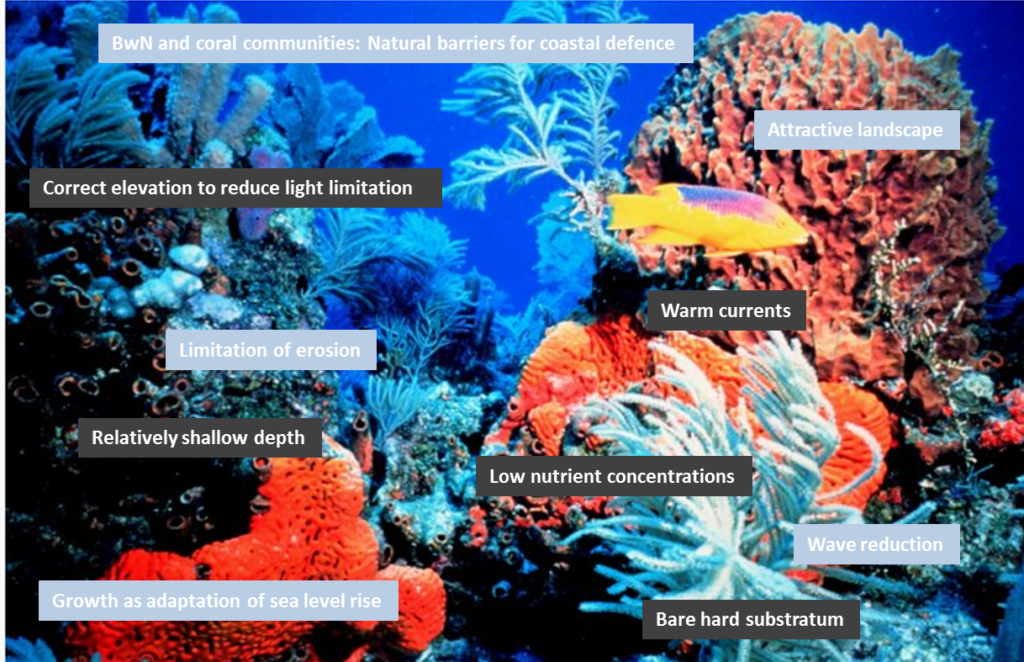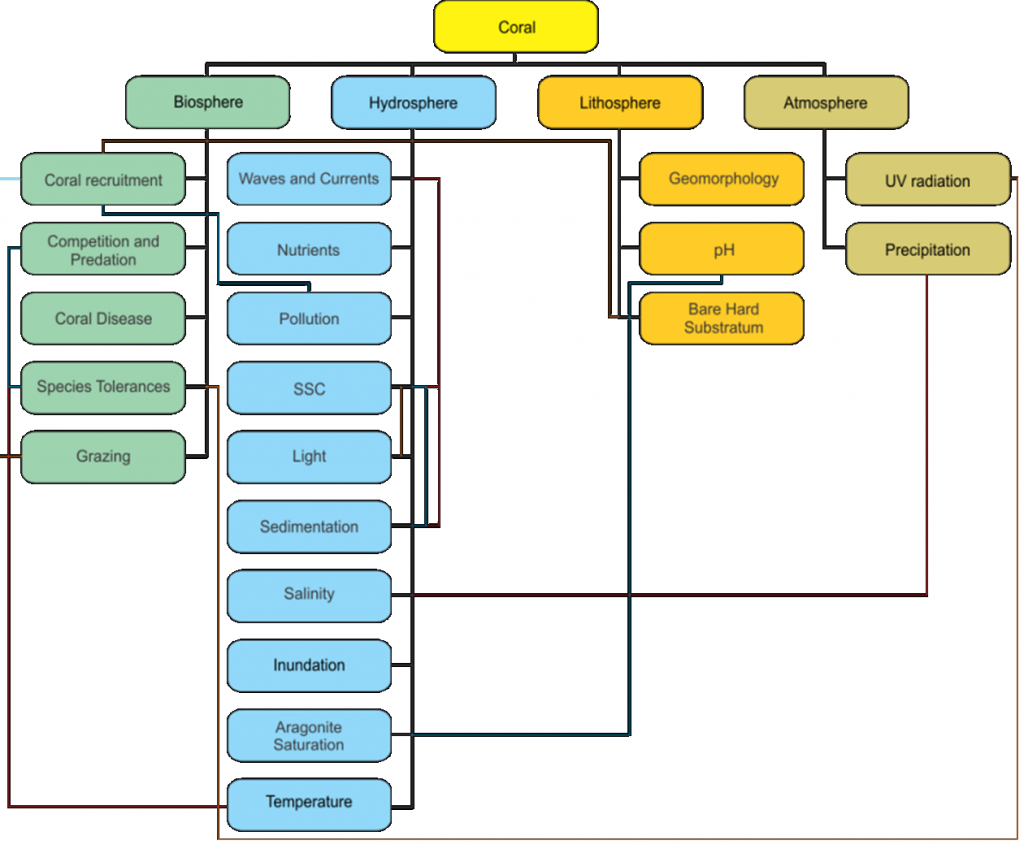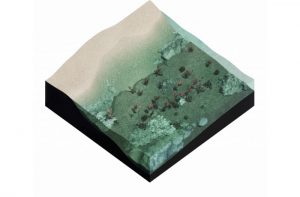Get Started
This Building Block focuses on the creation of coral communities that change the near-bed flow and dissipate wave energy, thereby influencing sediment transport, erosion and deposition. This Concept is intended to provide ecological guidance on habitat requirements that are specifically needed to support coral communities rather than coral reefs. A coral reef is a complex ecosystem which can take a long time to develop and contains a large number of species. In this Concept, the focus is on coral communities, as they are less complex but still have the ability to function as an ecosystem engineer. The establishment and persistence of coral communities are wholly dependent on a range of highly-linked variables that in total define the environmental conditions of coral taxa (Harricott and Banks, 2002). While some of these may be manipulated, e.g. provision of hard substrata and correct elevation to reduce light limitation, many are ultimately dependent on large-scale processes and cannot be controlled. The Concept is intended to help with a first assessment of feasibility for a coral community on a specific location by using available local data.
Required skills
With this manual, anyone having a basic level of knowledge and/or working experience in tropical coastal systems can make a first-order assessment. To fully assess the suitability for coral communities one should have additional ecological expertise on corals.
BwN interest
The added value of this tool within Building with Nature-type (BwN) projects is that it enables the creation of natural coastal barriers with reef-building ecosystem engineers. Ecosystem engineers are certain key species that form structurally complex habitats. They aim to combine the intended function, for example, coastal protection and/or associated economic and social returns with habitat restoration/conservation by for example enhancing biodiversity.
An example where coral relocation was successfully applied is the Cruise Ship Terminal in Jamaica.

Habitat requirements corals
This Concept describes the habitat requirements for corals based on the 4 spheres approach, because all these four spheres (Biosphere, Hydrosphere, Lithosphere and Atmosphere) interact with each other and cannot be evaluated on their own. The biosphere constitutes all living aspects of the coral environment, and includes intrinsic (e.g. species tolerances) as well as extrinsic (e.g. competition with algae) factors. The hydrosphere relates to the liquid environment, and includes hydrodynamics and pollutants. The lithosphere represents the solid environment (e.g. substratum), while the atmosphere relates to climatic and meteorological conditions.

For each sphere the key parameters are described, and minimum and maximum values for coral persistence are provided where possible. These values are based on literature, but should not be prioritized over available local information. The values provide an overall guideline for the potential establishment of coral communities.
The diagram gives an overview of the environmental spheres, with the critical parameters highlighted in red. It should be noted that the thresholds for each parameter vary with species, life stage and exposure history and may be further modified by interactions with other stressors.
For more detailed information on the spheres, given in the image above, click the links below.

